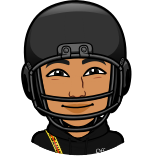Guidance
Cards (45)
- What is the general principle of guidance?
- How many methods of guidance are there?
- What is visual guidance primarily used for?
- What is an example of visual guidance in sports?
- Why is visual guidance effective for beginners?
- How does visual guidance help in focusing attention?
- What is a potential negative of visual guidance?
- What is a drawback of visual guidance regarding kinesthetic sense?
- What is verbal guidance primarily composed of?
- How can verbal guidance be delivered?
- What is a benefit of combining verbal guidance with visual guidance?
- What is a potential negative of verbal guidance?
- Why might verbal guidance lead to misunderstandings?
- What is a limitation of verbal guidance for beginners?
- What is manual guidance?
- What is a positive aspect of manual guidance?
- What is a potential negative of manual guidance?
- What is mechanical guidance?
- What is a benefit of mechanical guidance?
- What is a drawback of mechanical guidance?
- What is the general principle of guidance?
- In what context is guidance particularly relevant?
- What are the four methods of guidance?
- What is visual guidance primarily associated with?
- How might visual guidance be presented in a gym setting?
- What is a key benefit of visual guidance for beginners?
- How does visual guidance help in focusing attention during practice?
- What is a potential drawback of visual guidance?
- Why might visual guidance be time-consuming?
- What does the term 'kinesthetic sense' refer to?
- What is verbal guidance primarily composed of?
- How can verbal guidance be delivered?
- What is a benefit of combining verbal guidance with visual guidance?
- What is a potential negative aspect of verbal guidance?
- Why might misunderstandings occur with verbal guidance?
- What is a drawback of verbal guidance for beginners?
- How can verbal guidance enhance motivation?
- What is manual guidance?
- What is a key benefit of manual guidance?
- What is a potential drawback of manual guidance?
